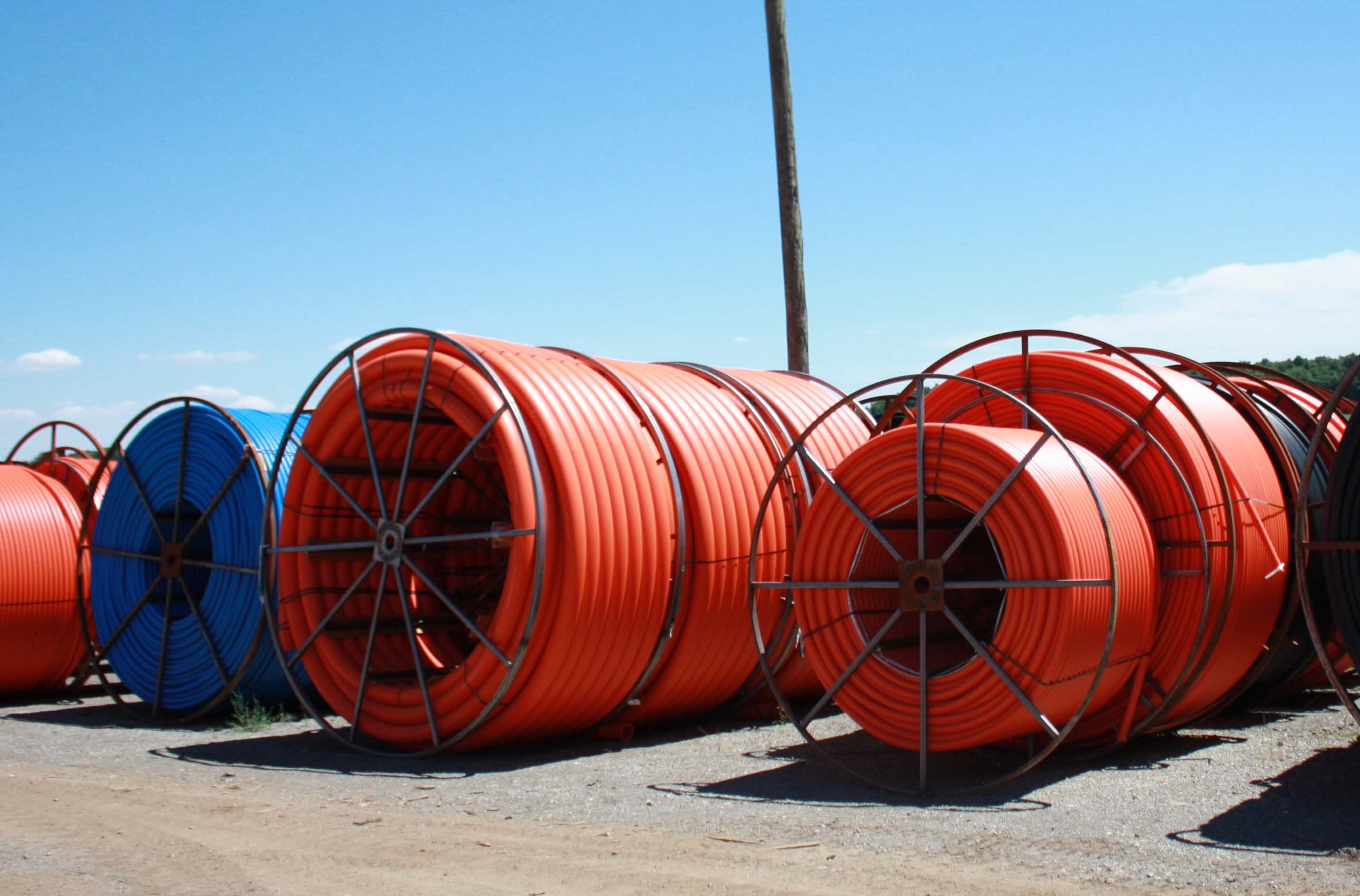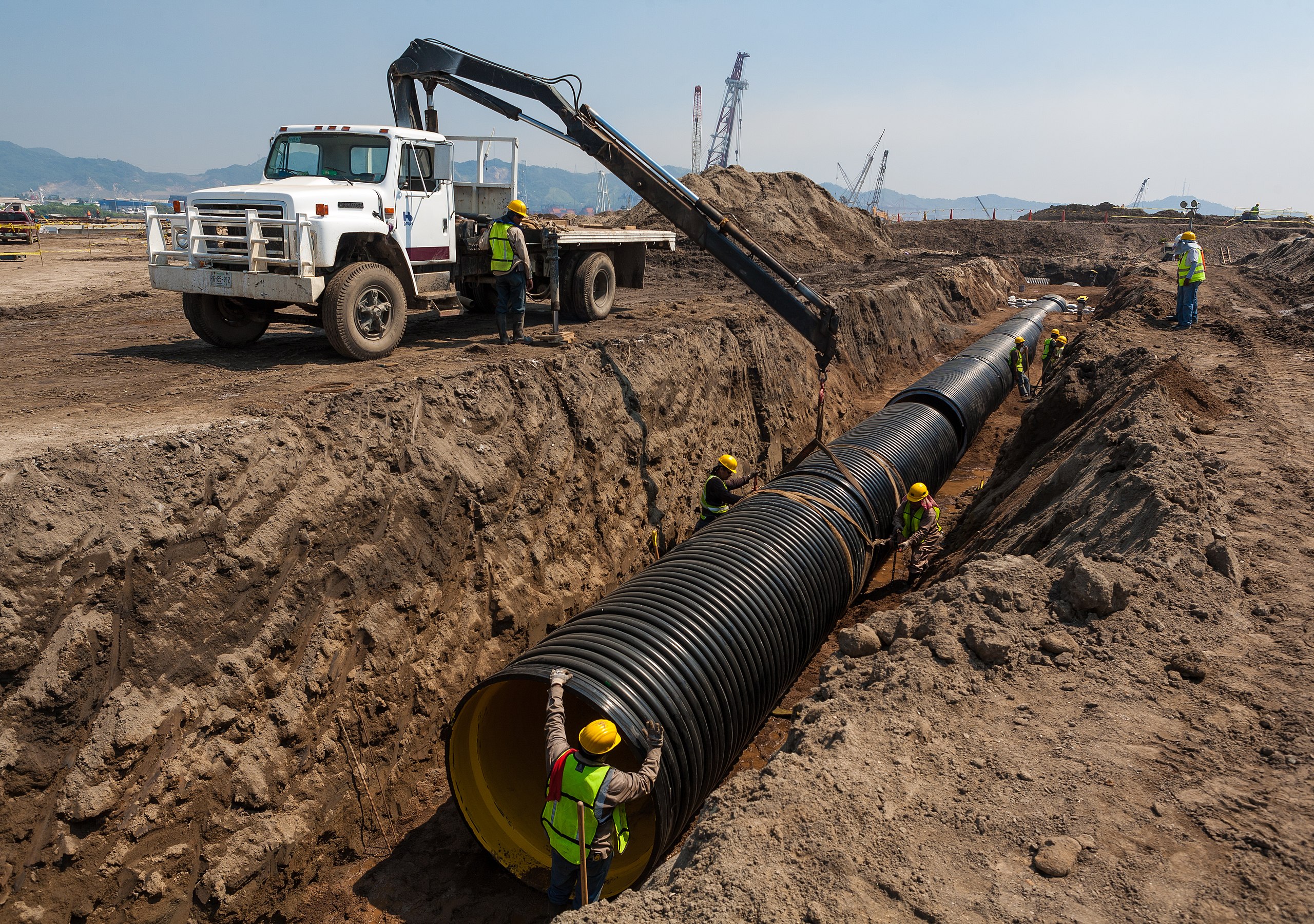The Definitive Handbook to Pipe Manufacturing Midland TX for Energy Projects
Discover the Manufacturing Refine Behind High-Quality HDPE Pipe and Its Applications
The manufacturing process of premium HDPE pipes is intricate and methodical. It begins with the selection of basic materials that boost efficiency. Following this, ethylene goes through polymerization to develop resin, which is after that shaped via extrusion. Quality control is critical, ensuring that the end product fulfills rigorous criteria. The trip of HDPE pipes does not finish with production. Their applications throughout various sectors expose a broader relevance worth analyzing.
Comprehending HDPE: Features and Advantages

High-density polyethylene (HDPE) is a flexible polycarbonate recognized for its longevity and resistance to numerous environmental elements. This material exhibits exceptional tensile strength, making it ideal for requiring applications. Its low-density framework adds to a lightweight product, assisting in convenience of taking care of and installment. HDPE additionally showcases impressive resistance to chemicals, which minimizes destruction when revealed to extreme substances.
The material's reduced wetness absorption additionally improves its long life, making it excellent for usage in pipelines and storage containers. In addition, HDPE is immune to ultraviolet (UV) radiation, guaranteeing that products maintain their honesty also when subjected to sunlight. Additionally, its versatility allows for the creation of detailed forms without jeopardizing stamina. The eco-friendly nature of HDPE, frequently obtained from recycled products, includes to its appeal, promoting sustainable techniques in manufacturing. In general, these properties and advantages make HDPE a favored selection for different industrial and consumer applications.
Resources Choice for HDPE Manufacturing
The option of basic materials for HDPE production is necessary to verify the end product meets the desired specs and high quality requirements. High-density polyethylene (HDPE) is mainly produced from polymerized ethylene, originated from nonrenewable fuel sources such as all-natural gas or petroleum. The quality of these feedstocks substantially influences the mechanical and thermal properties of the last HDPE.
Additives also play a considerable role in boosting HDPE's performance, including antioxidants, UV stabilizers, and colorants, which enhance durability and resistance to environmental factors. The option process need to take into consideration not just the chemical make-up of the raw products but additionally their processing characteristics to assure efficient production.
The sourcing of raw materials ought to prioritize sustainability and conformity with ecological policies, as accountable techniques are crucial in today's market. Eventually, cautious basic material choice lays the structure for creating top quality HDPE pipelines ideal for diverse applications.
The Extrusion Process: Shaping HDPE Pipeline
The extrusion process plays a vital duty fit HDPE pipelines, beginning with precise material preparation strategies that assure perfect circulation and uniformity. Just as vital is the layout of the die, which directly affects the final dimensions and surface high quality of the pipeline. Together, these variables add significantly to the performance and top quality of HDPE pipe production.
Product Prep Work Strategies
Reliable manufacturing of HDPE pipes begins with careful material prep work strategies, especially the extrusion process. During this stage, high-density polyethylene resin is initial dried out to get rid of wetness, making sure perfect flow characteristics. The resin is after that fed right into the extruder, where it goes through heating and melting, transforming right into a viscous state. This heating procedure is thoroughly managed to preserve the product's stability and performance. The molten HDPE is forced through a die, forming it into a continual pipe type. Proper temperature level administration during extrusion is essential, as it straight impacts the material's residential or commercial properties and the final item quality. When formed, the HDPE pipeline is cooled down and cut to defined sizes, ready for succeeding handling and applications.
Die Style Importance
Accuracy in die design plays an important duty in the extrusion process of HDPE pipelines. The die acts as the last shaping device, straight influencing the pipeline's measurements, wall density, and surface area finish. A well-designed die guarantees uniform material circulation, minimizing defects such as irregularities and weak points. The geometry of the die should be optimized to fit the details properties of HDPE, including its viscosity and thermal habits throughout extrusion. Additionally, the cooling rate of the product as it passes via the die can significantly impact the pipeline's structural stability. Subsequently, buying sophisticated die modern technology is vital for producers intending to produce top notch HDPE pipelines that fulfill sector requirements and consumer assumptions.
High Quality Control Actions in HDPE Production
Different variables affect the high quality of HDPE pipe manufacturing, effective quality control measures are crucial to assure uniformity and dependability in the last product (hdpe pipe in stock Midland TX). Secret quality assurance practices consist of extensive material inspection, validating that the raw polyethylene satisfies well-known requirements for purity and thickness. During the extrusion process, parameters such as temperature level, pressure, and cooling time are very closely checked to preserve dimensional accuracy and architectural integrity
On top of that, post-production testing is essential; producers commonly conduct hydrostatic examinations to evaluate the pipeline's stamina and resistance to stress. Visual examinations for surface area visit their website issues even more boost high quality guarantee. Certification from appropriate criteria organizations, like ASTM or ISO, supplies an additional layer of reputation. By applying these comprehensive quality control procedures, suppliers can lessen flaws, improve performance, and make certain that the HDPE pipelines satisfy the details demands of different applications, inevitably leading to consumer fulfillment and rely on the product.
Applications of HDPE Pipe Throughout Industries
HDPE pipes are used throughout numerous industries because of their longevity and adaptability. In water circulation systems, they assure efficient shipment, while in wastewater monitoring, they provide reputable remedies for waste transportation. Additionally, farming watering networks profit from HDPE's resistance to corrosion and flexibility, making it an optimal option for modern-day farming methods.

Water Circulation Systems
A substantial number of markets rely upon high-density polyethylene (HDPE) pipelines for efficient water circulation systems. Recognized for their toughness and resistance to rust, HDPE pipelines are widely used in municipal supply of water networks, agricultural irrigation, and commercial applications. Their light-weight nature helps with simple handling and installation, lowering labor costs and time. Furthermore, HDPE pipelines can accommodate different pressure levels, making them suitable for both low and high-pressure systems. Pipe Manufacturing Midland TX. The versatility of the product permits smooth assimilation right into existing framework, reducing the demand for extensive excavation. In addition, HDPE's resistance to chemical leaching assurances that the water delivered continues to be secure and tidy, making it a perfect option for preserving the top quality of safe and clean water throughout numerous markets
Wastewater Administration Solutions
Reliable water distribution systems likewise pave the means for ingenious wastewater management solutions, where high-density polyethylene (HDPE) pipes play a significant duty. Prominent for their longevity and resistance to corrosion, HDPE pipelines are ideal for transporting wastewater in various setups. Their adaptability enables easy installation in complex settings, lessening the requirement for comprehensive excavation. In addition, HDPE's smooth interior surface area reduces rubbing, enhancing circulation prices and efficiency. These pipelines are also resistant to chemical leaching, making certain that contaminants do have a peek at this site not endanger the surrounding atmosphere. Industries, communities, and therapy facilities progressively count on HDPE pipes for their reliability and long life, making them a recommended choice for contemporary wastewater monitoring systems. This versatility underscores the important importance of HDPE pipes across many applications.
Agricultural Watering Networks
Agricultural irrigation networks benefit greatly from using high-density polyethylene (HDPE) pipelines, which give efficient and trustworthy water distribution to crops. HDPE pipes are lightweight, making them simple to move and install, while their adaptability enables various arrangements in varied surfaces. These pipelines show exceptional resistance to rust, chemicals, and UV radiation, guaranteeing durability in severe farming environments. Additionally, their smooth indoor surface area decreases friction loss, optimizing water flow and reducing energy expenses related to pumping. The longevity of HDPE pipes, commonly surpassing half a century, adds to reduce upkeep and replacement expenditures. Farmers increasingly rely on HDPE pipelines to enhance watering effectiveness and promote lasting farming techniques, inevitably leading to improved crop returns and source conservation.

Future Fads in HDPE Pipeline Innovation
As the need for sustainable and effective infrastructure grows, innovations in HDPE pipeline innovation are positioned to change different sectors. Arising fads include the combination of clever modern technologies, such as sensors and IoT capabilities, which facilitate real-time surveillance of pipe problems, minimizing maintenance expenses and avoiding leakages. Additionally, the development of innovative manufacturing strategies, such as 3D printing, is enabling the production of facility, tailored pipe styles that provide to certain task needs.
The emphasis on recycling and circular economic situation techniques is driving the development of HDPE pipes made from recycled products, boosting sustainability. Boosted jointing methods, such as electro-fusion and mechanical installations, are also enhancing installation performance and integrity. The growing emphasis on environmental guidelines is pressing suppliers to adopt greener manufacturing processes, guaranteeing that HDPE pipes not only satisfy market criteria yet likewise foster a more lasting future for facilities advancement.
Regularly Asked Concerns
How Does HDPE Compare to Other Plastic Materials?
HDPE exceeds lots of various other plastic products regarding durability, chemical resistance, and flexibility. Its reduced thickness and high tensile toughness make it excellent for various applications, typically surpassing options in both efficiency and longevity.
What Are the Ecological Influences of HDPE Manufacturing?
The ecological effects of gas line replacement HDPE manufacturing include greenhouse gas exhausts, energy consumption, and prospective air pollution from producing procedures. Additionally, improper disposal can result in soil and water contamination, raising problems concerning long-term ecological impacts.
Can HDPE Water Lines Be Recycled?
Yes, HDPE pipes can be reused. Several facilities accept used HDPE for handling, changing it into new items. This reusing adds to sustainability initiatives, minimizing plastic waste while preserving sources and power in the production cycle.
What Is the Life Expectancy of HDPE Pipes?

Exactly How Do Temperature Variations Impact HDPE Pipeline Performance?
Temperature level variations considerably impact HDPE pipe performance, impacting versatility and stamina. High temperatures can lead to softening, while low temperatures might cause brittleness, inevitably affecting the pipeline's longevity and suitability for numerous applications in diverse atmospheres.